Occupational Safety Training for Badminton Shuttlecock Manufacturing
99,000 ₫
Note: The above price is calculated per person and may vary depending on the number of trainees participating in the course and market fluctuations. For more accurate pricing support, please refer to the price list or contact our consultants directly.
Occupational safety is an important issue in badminton manufacturing plants and needs to be addressed promptly to ensure the health and safety of workers and enhance the reputation of businesses. The Occupational Safety Training course is one of the most effective solutions to raise awareness of accident prevention for workers involved in badminton manufacturing.
Table of Contents
Toggle1. Overview of Badminton
a. What is Badminton?
Badminton is a competitive sport played between two players (singles) or two teams of two players each (doubles). The objective is to hit a small, lightweight projectile called the “shuttlecock” back and forth over the net without letting it fall on one’s own side of the court.
Basic elements of badminton:
- Shuttlecock:
- Structure: The shuttlecock has a head made of plastic or leather and 16 feathers attached to the head. The feathers create air resistance as the shuttlecock flies, making it fly slower and easier to control direction.
- Characteristics: Shuttlecocks typically weigh between 4.7 to 5.5 grams and can fly at very high speeds.
- Racket:
- Structure: Badminton rackets have a lightweight frame, usually made of carbon or aluminum alloy, with a crisscrossed string surface. They are designed to provide optimal hitting power and precise control.
- Playing court:
- Dimensions: The badminton court is rectangular, 13.4 meters long and 6.1 meters wide for doubles matches, and 5.18 meters wide for singles. The net divides the court into two halves, 1.55 meters high at the center and 1.52 meters at the sides.
- Court surface: The surface may be made of wood, mat, or felt, with marked lines defining playing areas.
- Rules:
- Scoring: A match usually consists of 3 sets, each played to 21 points. To win, a player or team must win 2 sets.
- Serving: The player or team serves from behind the court line and must hit the shuttlecock so that it flies over the net and lands within the opponent’s designated area.

b. Types of Machines Used in Badminton Production
1. Shuttlecock Head Manufacturing Machines
- Head forming machines: These machines produce the shuttlecock heads, usually made of plastic or leather. Forming machines use molds to cast or press the head components.
- Painting or surface treatment machines: To ensure durability and meet quality standards, these machines apply protective coatings or decorative paint on the shuttlecock heads.
2. Feather or Nylon Assembly Machines
- Feather cutting and preparation machines: These machines cut and prepare feathers made from leather or plastic, arranging them by length and shape as needed.
- Feather attaching machines: Machines that assemble the feathers onto the shuttlecock head. This process requires high precision to ensure the feathers are securely and evenly fixed.
3. Stringing Machines
- Racket stringing machines: Specialized machines for stringing badminton rackets. They allow adjustment of string tension according to player requirements.
4. Racket Manufacturing Machines
- Frame forming machines: Machines that mold or press racket frames from materials like carbon or aluminum alloy. The process usually involves heating and shaping to produce a lightweight yet strong frame.
- Stringing machines: After frame forming, these machines string the rackets according to specific technical parameters.
5. Quality Control Machines
- Durability testing machines: Used to test the durability of shuttlecocks and rackets to ensure they meet quality and safety standards.
- Weight and dimension testing machines: To ensure products meet the precise weight and size standards required by the sport.
6. Packaging Machines
- Automatic packaging machines: Used to pack shuttlecocks and rackets into packaging, increasing efficiency and reducing errors in the packaging process.

c. Famous Badminton Brands
1. Yonex
- Introduction: Yonex is one of the most famous brands in badminton, founded in Japan, known for high-quality rackets, shuttlecocks, and accessories.
- Popular products: Yonex Astrox, Nanoray, and Arcsaber rackets; Yonex Mavis 300, 350 shuttlecocks.
- Features: Advanced technologies such as Isometric and Namd systems, high-quality products used in international tournaments.
2. Li-Ning
- Introduction: Li-Ning is a major Chinese brand famous for sports products, especially badminton rackets and sportswear.
- Popular products: Li-Ning Windstorm, N9, and Turbocharging rackets; Li-Ning A+ Series shuttlecocks.
- Features: Modern technologies like HDF (High-Density Foam) and Aerotec Beam improve performance and feel.
3. Victor
- Introduction: Victor is a Taiwanese brand renowned for high-quality badminton products popular worldwide.
- Popular products: Victor Bravesword, Jetspeed, and Thruster rackets; Victor Master Ace shuttlecocks.
- Features: Advanced technologies such as Nano 6.0 and Dynamic Shaft, noted for ergonomic design and durability.
4. Babolat
- Introduction: Babolat, a French brand mainly known for tennis products, also offers quality badminton equipment.
- Popular products: Babolat Satelite and X Feel rackets.
- Features: High quality and lightweight design, suitable for both professional and amateur players.
5. Carlton
- Introduction: Carlton is a British badminton brand with a long history in sports equipment.
- Popular products: Carlton Kinesis and Vapour rackets; Carlton GT1 shuttlecocks.
- Features: Focus on innovation in design and technology, offering high performance and durability.
6. Ashaway
- Introduction: Ashaway, a U.S. brand, is known for high-quality badminton strings and rackets.
- Popular products: Ashaway Zymax and MicroPower strings; Ashaway Phantom rackets.
- Features: Specialized in strings and accessories, providing optimal solutions for players.
7. SOTX
- Introduction: SOTX is a Chinese brand known for quality badminton rackets and shuttlecocks.
- Popular products: SOTX Woven, D-900, and F-9 rackets; SOTX Feather shuttlecocks.
- Features: Innovative design and advanced technology to enhance playing performance.

d. Specific Jobs in a Badminton Production Factory
Group 1
- CEO, Deputy CEO, Department Heads in the badminton production factory.
Group 2
- Safety officers: manage factory safety, design safety procedures, monitor and enforce staff compliance with safe working procedures.
Group 3
- Cutting and Preparation: Cutting and processing raw materials (plastic, leather) to create shuttlecock heads.
- Pressing and Molding: Using presses or molds to shape shuttlecock heads.
- Cutting and Preparation: Cutting and preparing feathers from leather or plastic materials.
- Arranging and Attaching: Arranging feathers by length and attaching them to the shuttlecock head.
- Cutting and Molding: Cutting and molding materials such as carbon or aluminum alloy to make racket frames.
- Pressing and Heating: Pressing or heating to shape and reinforce the frame’s strength.
- Assembly: Assembling racket parts, including frame and handle.
- Stringing: Using stringing machines to string rackets according to specifications.
- Durability Testing: Performing tests to assess product durability and performance.
- Weight and Size Checking: Ensuring products meet correct weight and size standards.
Group 4
- Office, service, sales, and marketing jobs.
- Production management, quality control, human resources management, materials management, financial and accounting management.
- Research and development of new products, packaging design.
2. Overview of the Badminton Production Occupational Safety Training Course
Within the scope of this article, we focus on issues related to Group 3, because Group 3 consists of those directly participating in the production process and facing the highest occupational safety risks. For more information on other groups, see here.
a. What is Group 3 Occupational Safety Training?
- Group 3 Occupational Safety Training consists of sessions that provide awareness on how to prevent occupational accidents for workers.
- The safety training course helps workers recognize and avoid hazards, minimizing risks of occupational accidents during work.
REGISTER FOR OCCUPATIONAL SAFETY TRAINING SERVICE
b. Training Duration
Initial safety training duration
- The total training time is at least 24 hours, including examination time.
- 8 hours of theory on the system of policies and laws on occupational safety and hygiene
- 8 hours of theory on basic knowledge about occupational safety and hygiene
- 4 hours of theory on specialized training content
- 2 hours of practical training on specialized content
- 2 hours of theory examination at the end of the course
The safety training center will arrange the training time into multiple sessions depending on the worker’s schedule. Usually, there are 6 training sessions over 3 days, provided the manufacturing company can schedule continuous training time.
Periodic safety training duration
- Before the occupational safety card expires, workers who want to renew it must undergo a periodic occupational safety training course, with the periodic training time being at least 50% of the initial training duration.
Explanation: The total time for periodic occupational safety training is at least 12 hours, including examination time. After completing the periodic training and passing the test, workers will be reissued and extended their occupational safety card.
c. Training Course Content
| No. | TRAINING CONTENT | TRAINING DURATION (HOURS) | |||
| Total | Including | ||||
| Theory | Practice | Examination | |||
| I | System of Policies and Laws on Occupational Safety and Hygiene | 8 | 8 | 0 | 0 |
| 1 | Overview of the legal documents system on occupational safety and hygiene. | 6 | 6 | ||
| 2 | System of standards and technical regulations on occupational safety and hygiene. | 1 | 1 | ||
| 3 | Specific regulations of state management agencies on occupational safety and hygiene when constructing, expanding, or renovating facilities for production, usage, storage, preservation, and inspection of machines, equipment, materials, and substances with strict occupational safety and hygiene requirements. | 1 | 1 | ||
| II | Basic Knowledge of Occupational Safety and Hygiene | 8 | 8 | 0 | 0 |
| 1 | Basic knowledge about hazardous and harmful factors at the workplace. | 4 | 4 | ||
| 2 | Methods to improve working conditions. | 1 | 1 | ||
| 3 | Safety culture in production and business. | 1 | 1 | ||
| 4 | Rights and obligations of employers and employees; policies and regimes on occupational safety and hygiene for workers; functions and duties of the safety network and hygiene officers. | 1 | 1 | ||
| 5 | Occupational safety and hygiene regulations, signs and safety directions, use of safety equipment and personal protective equipment; skills and procedures for first aid in occupational accidents, prevention of occupational diseases. | 1 | 1 | ||
| III | Specialized Training Content | 6 | 4 | 2 | 0 |
| Comprehensive knowledge of types of machines, equipment, hazardous substances; risk analysis, evaluation, and management on occupational safety and hygiene; safe working procedures with machines, equipment, and substances with strict safety and hygiene requirements. | 6 | 4 | 2 | ||
| IV | Final Safety Training Examination | 2 | 2 | 0 | 0 |
| Total | 24 | 22 | 2 | ||
See more training content of the 6 groups
d. Occupational Safety Card
After completing the occupational safety training course and passing the examination, workers will be issued a safety card (commonly called a Group 3 occupational safety certificate).
The Group 3 safety card clearly shows information such as full name, date of birth, job, and specific working environment. It also includes training duration, a red stamp, and signature confirming course completion.
According to regulations for card issuance specified in Clause 2 of Article 24 of Decree 44/2016/ND-CP, there are two cases:
- If there is an employment contract between employer and employee, the employer must sign, stamp, and countersign the safety card after the worker completes the training and passes the test.
- If the worker is freelance or seasonal without an employment contract, the training unit must sign, stamp, and countersign the safety card after the worker completes the training and passes the test.

3. Identifying Hazards Affecting Workers in Badminton Production
Risks Related to Machinery and Equipment
- Risk of getting trapped or injured: Machines such as cutting machines, pressing machines, and stringing machines may cause risks of hand or other body part entrapment.
- Risk of electric shock: Electronic devices and machinery can cause electric shock risks if not maintained or used properly.
Chemical Hazards
- Risk of exposure to toxic chemicals: During handling and painting of badminton parts, chemicals such as paint, adhesive, or solvents may be used.
Dust and Vapor Hazards
- Risk of inhaling dust and vapors: Processes such as cutting, grinding, and material handling may generate harmful dust and vapors.
Physical Strain Hazards
- Risk of back pain and muscle strain: Working long hours in improper postures may cause back pain and muscle strain.
Hazards from Moving and Lifting Heavy Objects
- Risk of injury when lifting or moving heavy objects: Materials and products may be heavy and difficult to move.
Burn or Wound Hazards
- Risk of burns from machinery or hot materials: Some production processes may generate high temperatures.
Noise Hazards
- Risk to hearing: Machinery in factories may generate loud noise, affecting hearing.
Lighting Hazards
- Risk from glare or insufficient lighting: Glare from lighting or inadequate lighting can cause eye strain or reduce work efficiency.
Work Pressure Hazards
- Risk of stress and fatigue: High work pressure and intense work can lead to stress and fatigue.

4. Safety Measures When Participating in Badminton Production
Training and Education
- Safety Training: Provide comprehensive training for all employees on safe working procedures, equipment use, and accident prevention measures.
- Risk Awareness Education: Raise awareness of potential hazards in the production process and how to handle them.
Use and Maintenance of Personal Protective Equipment (PPE)
- Body Protection: Provide and require the use of gloves, safety glasses, helmets, and other protective gear suitable for each job type.
- Hearing Protection: Provide noise-cancelling headphones in areas with loud noise.
- Respiratory Protection: Provide dust and chemical vapor masks when working with toxic chemicals or dust.
Equipment and Machinery Management
- Protective Devices: Ensure all machinery and equipment have safety guards, emergency stop buttons, and safety warnings.
- Periodic Inspection: Conduct regular maintenance and inspection to ensure equipment operates safely; repair immediately if issues arise.
- Operation Training: Ensure workers are fully trained on operating and maintaining equipment.
Chemical Hazard Management
- Safe Chemical Use: Use chemicals according to instructions and ensure good ventilation in the working area.
- Chemical Storage: Store chemicals safely and keep accessible safety information (MSDS).
- Handling and Cleaning: Provide guidance on how to handle chemical spills and safe cleanup procedures.
Dust and Vapor Management
- Dust Extraction Systems: Use effective dust extraction systems in high dust production areas.
- Ventilation: Ensure good ventilation to reduce harmful vapors and dust in the air.
- Periodically conduct occupational environment monitoring in factories, collecting and analyzing harmful factors for workers, then adjust to reduce hazards and prevent occupational diseases.
Posture and Physical Stress Management
- Working Posture: Provide equipment and working conditions that support correct posture, such as adjustable chairs and appropriate desks.
- Rest Time: Provide regular breaks and encourage stretching exercises to reduce physical stress.
Heavy Lifting and Moving Management
- Support Equipment: Use support devices such as forklifts and conveyors to move heavy objects.
- Lifting Techniques: Train staff on safe lifting techniques to avoid injuries.
Electrical Safety
- Electrical Inspection: Perform regular inspections and maintenance of electrical systems to ensure no risk of leakage or electrical faults.
- Usage Instructions: Train staff on safety measures when working with electrical equipment.
Lighting Management
- Adequate Lighting: Ensure sufficient lighting in work areas to minimize eye strain and accidents caused by poor lighting.
- Light Adjustment: Adjust lighting to avoid glare or reflections causing discomfort.
Stress and Health Management
- Reasonable Work Schedule: Build a reasonable work schedule to avoid overload and stress.
- Mental Support: Provide mental health support and encourage open communication between employees and management.
Safety Policies and Procedures
- Policy Development: Establish and maintain clear safety policies and safe work procedures.
- Risk Assessment: Conduct regular risk assessments and adjust work procedures to minimize hazards.
5. Benefits of Occupational Safety Training for Badminton Production
An Toàn Nam Việt offers your business the following great benefits upon completion of occupational safety training courses in accordance with the Decree 44/2016/ND-CP on occupational safety and hygiene management applicable to companies, factories, and enterprises.
- Employees can recognize potential risks of occupational accidents and take preventive measures to avoid accidents.
- Your business can establish risk prevention measures in production processes, operation, and maintenance.
- Reduce costs associated with occupational safety incidents.
- Uninterrupted production processes help increase labor productivity and product quality.
- Comply with occupational safety laws and avoid legal risks.
- Create credibility and professionalism in all aspects, thereby enhancing your business brand.
Nam Việt’s training courses are the solution to prevent and combat external factors affecting individuals, helping them avoid dangers that could lead to injury or, worse, death.
REGISTER FOR OCCUPATIONAL SAFETY TRAINING SERVICE
6. Customer Feedback After Completing Occupational Safety Training for Badminton Production
An Toàn Nam Việt has many years of experience accompanying numerous businesses in Vietnam in general and the southern provinces in particular. This responsibility is extremely precious to Nam Việt, which is why our Occupational Safety Training is increasingly professional. Our growth motivation comes from positive feedback and constructive suggestions from enterprises. Below are testimonials from our valued partners we have served.
Bac Nam E&C Investment Construction Joint Stock Company
“The first time using An Toàn Nam Việt’s service, I was surprised by the 24/7 enthusiastic support from the consulting team. The class organization was quick and convenient for our company. Thank you very much for the service!”
Hoa Dat Construction and Trading Joint Stock Company
“Nam Việt’s service has greatly helped us simplify occupational safety and complete safety documentation for work processes. The consulting team is enthusiastic and timely in addressing our questions. 5 stars for Nam Việt.”
See more customer interviews after using An Toàn Nam Việt’s services
7. Occupational Safety Training Capacity of An Toàn Nam Việt
An Toàn Nam Việt is a reputable and quality occupational safety training center in Vietnam today. Training sessions are continuously held at production workshops, factories, or construction sites nationwide (in all 63 provinces).
REGISTER FOR OCCUPATIONAL SAFETY TRAINING SERVICE
Occupational Safety Training License
- An Toàn Nam Việt has been inspected and certified by the Department of Safety under the Ministry of Labor, War Invalids and Social Affairs to be qualified for occupational safety and hygiene training activities. This certification further strengthens our training capacity.

Materials and Lectures
- Before safety training materials are used in occupational safety training courses, they are reviewed and approved to ensure the lectures are accurate and effective when applied.
- The teaching methods of instructors are standardized according to An Toàn Nam Việt‘s teaching standards, developed by experts in occupational safety and hygiene training to maximize knowledge absorption for learners.
Facilities
- Controlling classroom conditions that affect the training process enhances teaching efficiency and learners’ knowledge absorption.
- Our training facilities are spacious and meet standards for area, lighting, and training equipment, etc.
8. Nationwide Reputable and Quality Safety Training Center
At An Toàn Nam Việt, we always prioritize the occupational safety training profession. For us, imparting knowledge about self-protection to workers, so they have safety tools for their livelihood, contributes to national development.
To ensure effective training, we carefully prepare every detail, no matter how small—from tools, teaching equipment, to curriculum, materials, audio, and lighting.
Our occupational safety instructors are experts with many years of experience. They also have research works identifying hazards in all industries and how to prevent them.
Our lectures are based on practical experience and delivered in a lively, easy-to-understand manner to workers. These factors make learners comfortable and absorb knowledge well. Of course, the knowledge delivered always complies with Decree 44/2016/ND-CP.
Thus, learners grasp many preventive measures and how to protect themselves, applying them appropriately in real work.
Our training center is proud to be a reputable, professional provider of occupational safety training with the following advantages:
- Competitive training costs with guaranteed quality.
- Flexible training schedules adapted to company production situations.
- Fast and legally compliant certification procedures.
- Experienced instructors with many years in the field.
- Classrooms controlled for factors affecting training to improve teaching efficiency and learner knowledge absorption.
- Lectures tailored to occupational safety tasks in enterprises.
- An Toàn Nam Việt works dedicatedly and professionally to support customers promptly and accurately.

9. Additional References for Occupational Safety Training Materials on Badminton Production
- Occupational Safety Materials for Badminton Production
- Occupational Safety Training Materials
- Occupational Safety Training Test Papers
- Occupational Safety Training Curriculum for Badminton Production
- Occupational Safety Multiple-Choice Test for Badminton Production
No comments yet


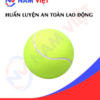
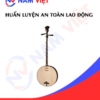



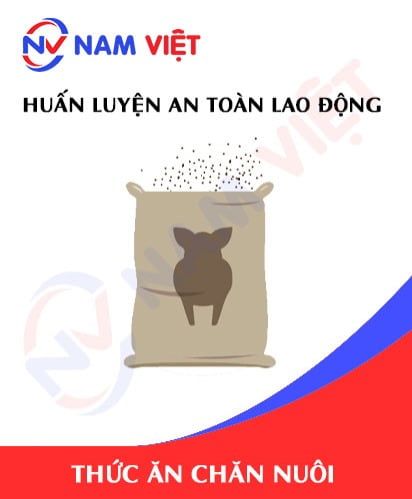
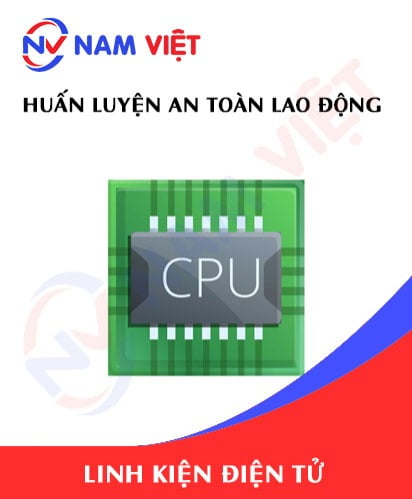
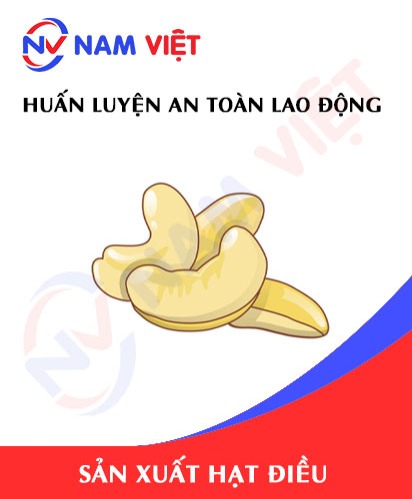
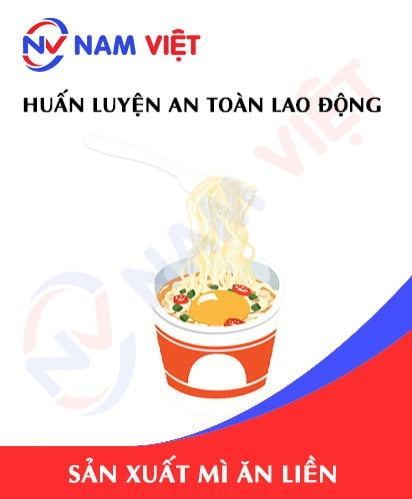
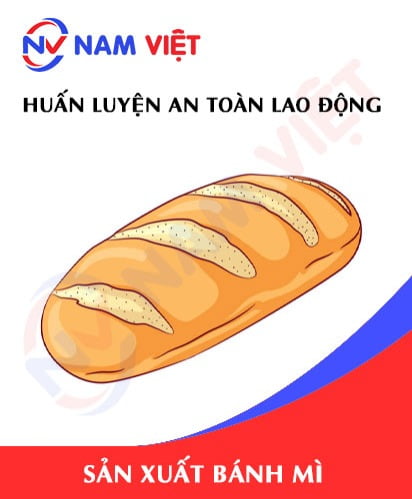
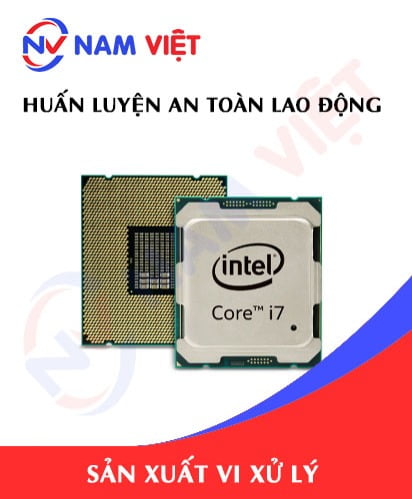
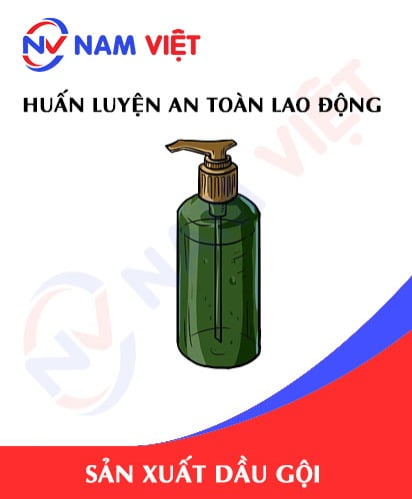
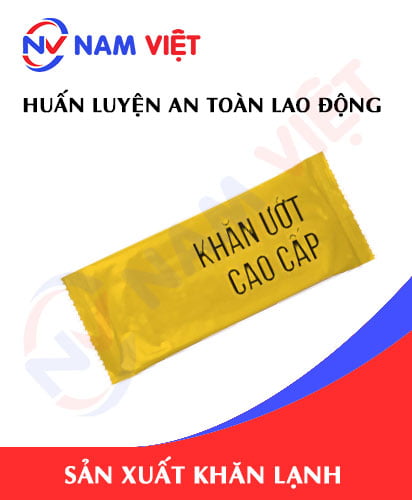
Review Occupational Safety Training for Badminton Shuttlecock Manufacturing
There are no reviews yet.